Selecting the perfect cut of ribs (baby back or spare) from high-quality sources is key for a mouthwatering BBQ rib recipe. Seasoning with paprika, garlic powder, salt, pepper, chili powder, thyme, rosemary and marinating enhances flavor and tenderness. Mastering the grill at 225°F–250°F (107°C–121°C) with indirect heat ensures a slow-cooked, caramelized crust. Slow cooking breaks down collagen for incredibly tender ribs. Presenting ribs on lettuce adds visual appeal to your BBQ rib recipe grill experience.
Looking to perfect your BBQ rib recipe? Grilling stunning, tender ribs every time is an art. This guide breaks down everything you need to know for mastery on the grill. From choosing the right ribs and mastering seasoning techniques to understanding slow cooking’s role in tenderness, we’ve got tips to elevate your BBQ rib game. Get ready to impress with the ultimate guide to grilling perfect ribs every single time.
- Choosing the Right Ribs: Tips for Quality and Taste
- Seasoning and Marinades: Creating Flavorful Rebs
- Mastering the Grill: Techniques for Even Cooking
- Slow Cooking for Tenderness: The Science Behind It
- Presentation and Serving: Making Your Ribs Pop
Choosing the Right Ribs: Tips for Quality and Taste
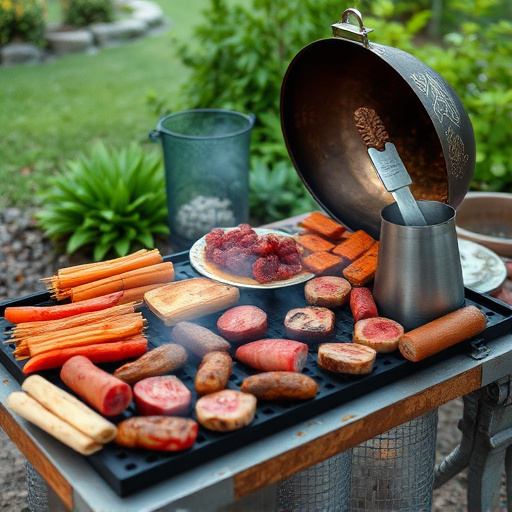
When it comes to grilling perfect barbecue ribs, starting with the right cut is half the battle won. Look for ribs that are meaty and have a good marbling of fat, as this adds flavor and tenderness. The most popular style is baby back ribs, which have less fat and a smaller bone structure, making them easier to grill evenly. If you prefer spare ribs, opt for those with a thick layer of fat known as the membrane; removing it after cooking enhances both taste and texture.
Choosing high-quality ribs from reputable butchers or markets ensures consistent results. Freshness matters; aged or dry-aged ribs will have better flavor. Consider purchasing whole slabs to allow for proper seasoning penetration, though pre-cut ribs are convenient for quicker grilling. Remember, the key to delicious BBQ ribs lies in patience and low, slow cooking to achieve that signature smoky flavor.
Seasoning and Marinades: Creating Flavorful Rebs
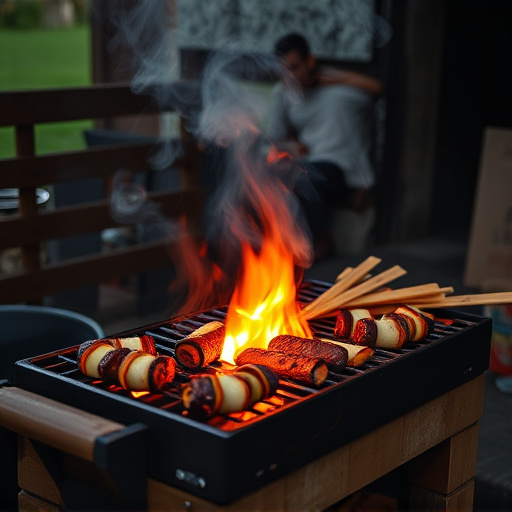
Seasoning and marinades play a pivotal role in transforming ordinary barbecue ribs into mouthwatering, flavorful delights. A good BBQ rib recipe starts with the right combination of spices. Paprika, garlic powder, salt, and pepper are staples that bring depth and heat to your ribs. For a smoky flavor, add a touch of chili powder or cayenne pepper. Experimenting with these seasonings allows you to customize your ribs to suit your taste preferences.
Marinades take seasoning up a notch by infusing the meat with extra moisture and flavor. A simple marinade consists of oil, vinegar, and herbs like thyme or rosemary. More complex recipes might include fruit juices, soy sauce, honey, or even beer for added richness. Marinating ribs for several hours or overnight helps tenderize them and ensures every bite is bursting with deliciousness when grilled to perfection on your BBQ.
Mastering the Grill: Techniques for Even Cooking
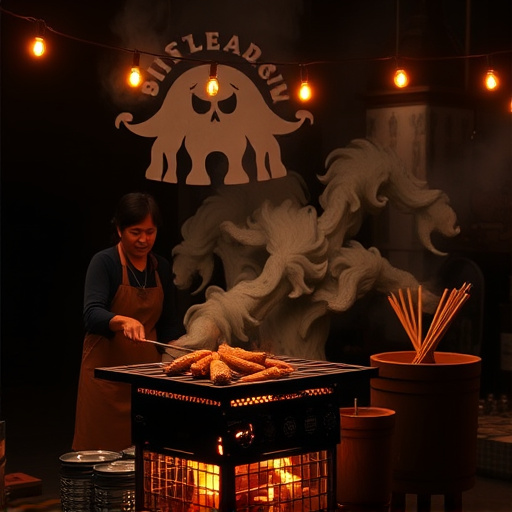
Mastering the grill is half the battle when it comes to crafting perfect BBQ ribs. The key lies in understanding and controlling heat, ensuring even cooking throughout. For optimal results, preheat your grill to a consistent temperature between 225°F–250°F (107°C–121°C). This slow-cooking range allows the collagen in the ribs to break down, resulting in tender, juicy meat.
Use indirect heat methods like placing ribs on one side of the grill and using a foil packet or smoker box on the other. This technique ensures even heat distribution, preventing hot spots that can burn the exterior while leaving the interior undercooked. Regularly rotating the ribs and baste them with BBQ sauce or a dry rub to achieve a beautiful caramelized crust without charring.
Slow Cooking for Tenderness: The Science Behind It
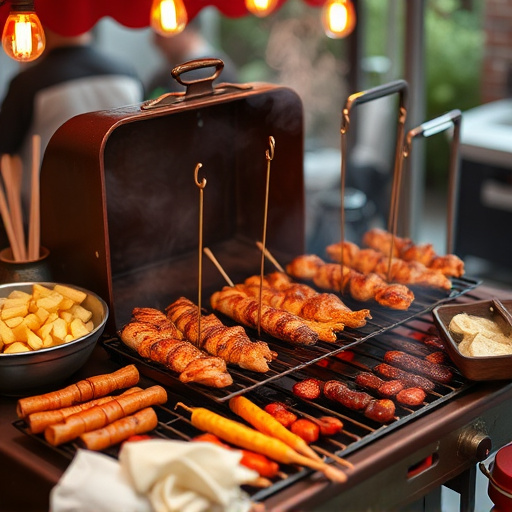
Slow cooking is a secret weapon for achieving melt-in-your-mouth tender BBQ ribs. This method goes beyond simple patience; it’s a scientific approach to breaking down collagen in the meat. Over low heat, enzymes naturally present in the ribs start to soften the tough connective tissues, transforming them into gelatin. This process takes time, but the result is a rib that glides off the bone effortlessly, ensuring every bite is pure deliciousness.
The key lies in maintaining a consistent, gentle temperature—typically around 225-250°F (107-121°C). By avoiding high heat, you prevent the ribs from becoming dry or overly chewy. Instead, slow cooking allows the flavors of your BBQ rib recipe to deeply penetrate the meat, creating a rich, succulent experience that grillers everywhere crave.
Presentation and Serving: Making Your Ribs Pop
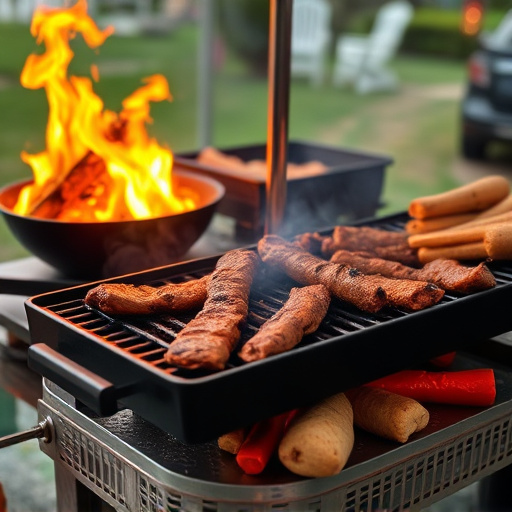
When it comes to presentation, barbecue ribs can be transformed from a simple meal to an impressive dish. Start by brushing your ribs with a layer of clear or mild sauce before grilling; this will help lock in moisture and create a shiny, appealing finish. As they cook, use a basting brush to add more sauce sparingly at regular intervals—just enough to glisten the meat without making it soggy.
For an extra touch, consider cutting your ribs into smaller portions or pairing them with complementary sides on a bed of lettuce or a colorful salad. Presenting your BBQ rib recipe in this way not only makes for a visually stunning plate but also allows guests to indulge in a variety of flavors and textures.
